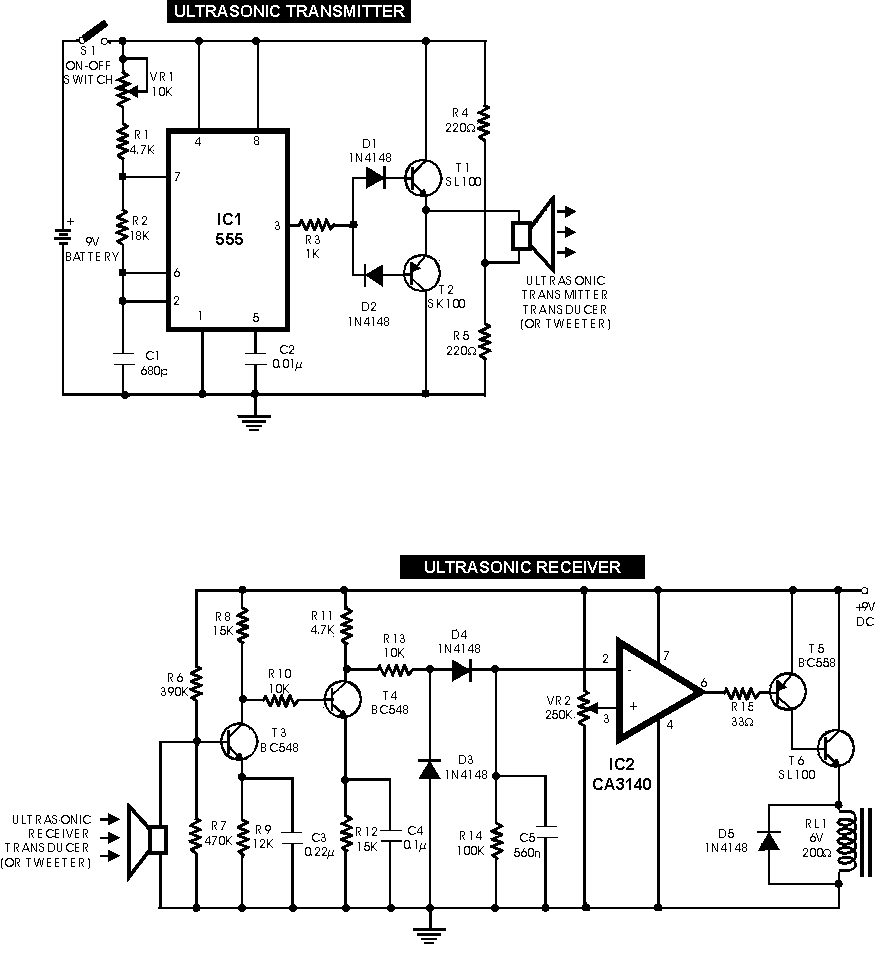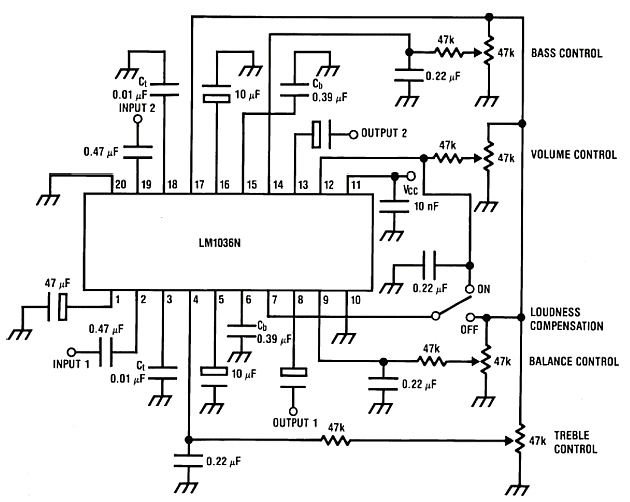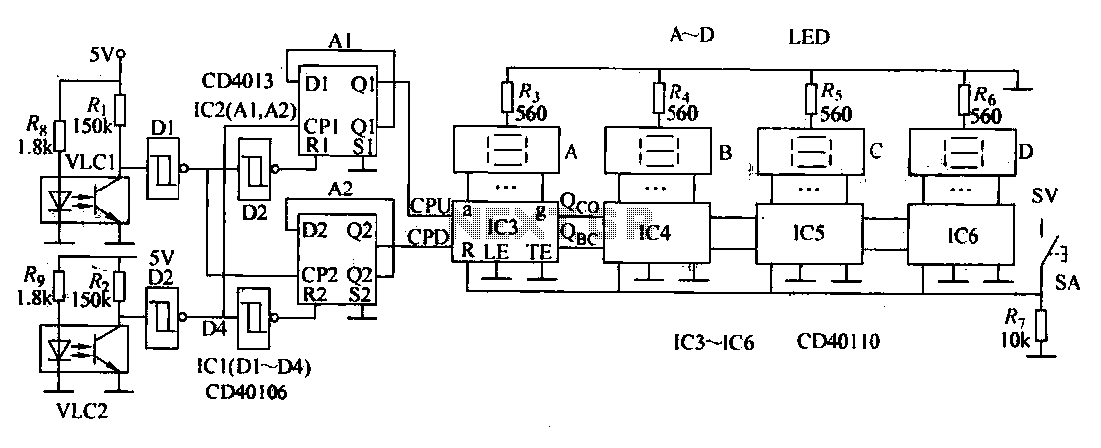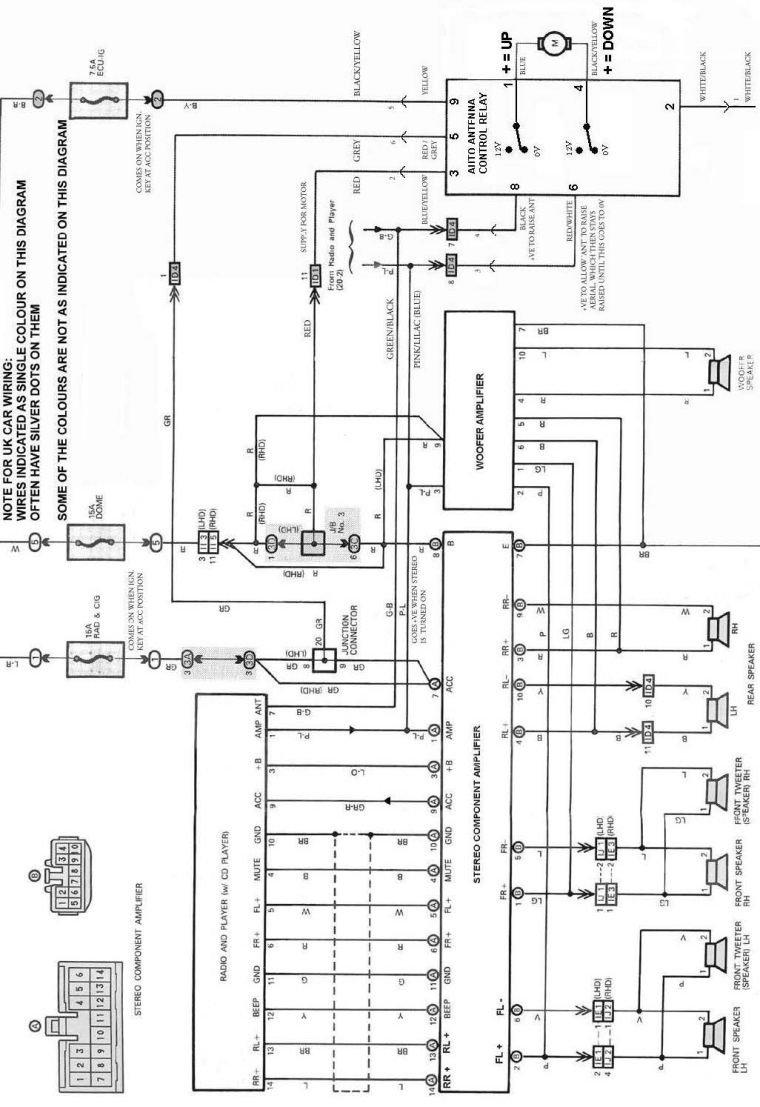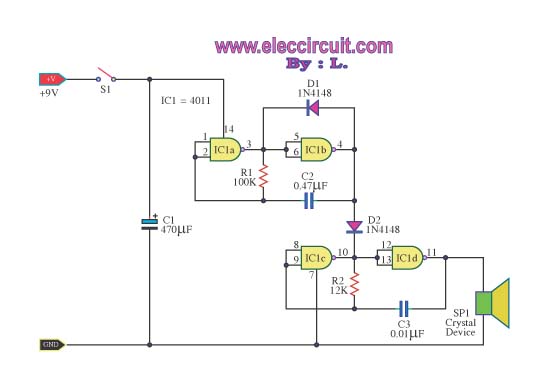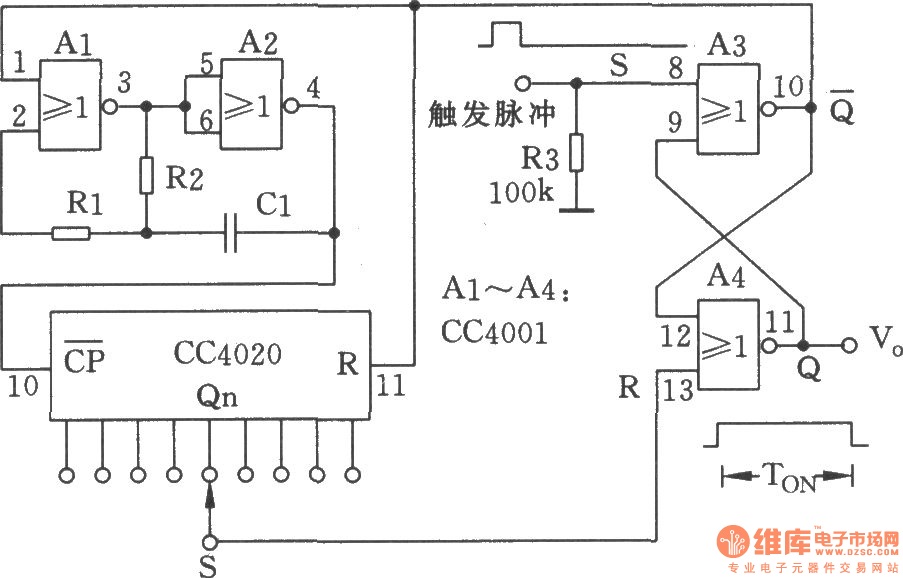
Pure Sine-Wave Generator Circuit
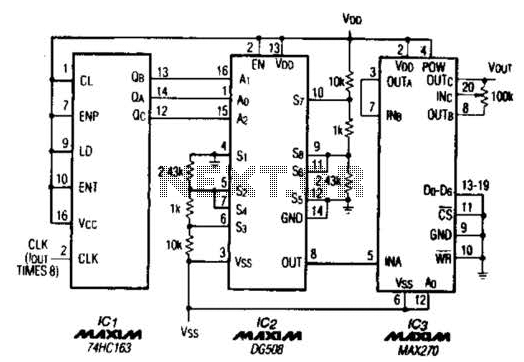
A TTL counter, an 8-channel analog multiplexer, and a fourth-order low-pass filter can generate sine waves ranging from 10 kHz to 25 kHz with a total harmonic distortion (THD) better than -80 dB. The circuit employs two cascaded second-order, continuous-time Sallen-Key filters within integrated circuits (ICs) to create the fourth-order low-pass filter. To operate the circuit, the cutoff frequency can be selected by connecting the D0 through D6 inputs of IC3 to -5 V or ground. This configuration allows for 128 possible cutoff frequency levels between 1 kHz and 25 kHz, determined by the seven digital input levels. When D0 through D6 are tied to ground, the cutoff frequency is set to 1 kHz. Additionally, a 100 kΩ potentiometer is utilized to adjust the output level between Vw - 1.5 V and Vss + 1.5 V.
The described circuit is a sophisticated waveform generator capable of producing high-fidelity sine waves with minimal distortion. The integration of a TTL counter allows for precise digital control over the frequency generation process, while the 8-channel analog multiplexer facilitates the selection of different signal paths, enhancing versatility in signal routing.
The fourth-order low-pass filter, constructed from two cascaded Sallen-Key topologies, effectively attenuates unwanted high-frequency components, ensuring that the output sine wave maintains its integrity. The choice of Sallen-Key filters is advantageous due to their simplicity and effectiveness in achieving a flat passband response alongside a sharp roll-off beyond the cutoff frequency.
The cutoff frequency selection mechanism, which utilizes digital inputs to define the frequency range, provides a high level of customization. By connecting the D0 through D6 inputs to either -5 V or ground, the user can select from 128 discrete frequency steps, allowing for precise tuning of the output frequency. This feature is particularly beneficial in applications requiring specific frequency outputs.
The inclusion of a 100 kΩ potentiometer for output level adjustment adds another layer of functionality, enabling the user to fine-tune the amplitude of the generated sine wave. The range of adjustment, from Vw - 1.5 V to Vss + 1.5 V, allows for compatibility with various signal processing stages that may follow the output of this circuit.
Overall, this circuit design represents a robust solution for generating high-quality sine waves, suitable for a variety of applications in signal processing, testing, and other electronic systems requiring precise waveform generation. A TTL counter, an 8-channel analog multiplexer, and a fourth-order low-pass filter can generate 10- to 25-kHz sine waves with a THD better than -80 dB. The circuit cascades the two second-order, continuous-time Sallen-Key filters within ICS to implement the fourth-order low-pass filter.
To operate the circuit, choose the filter`s cutoff frequency,^, by tying IC3`s D0 through D6 inputs to-5 V or ground. The cutoff frequency can be at 128 possible levels between 1 and 25 kHz, depending on those seven digital input levels.Because the circuit ties D0 through D{, to ground Jc equals 1 kHz.
The 100-kQ potentiometer adjusts the output level between Vw - 1.5 V and Vss + 1.5 V.
The described circuit is a sophisticated waveform generator capable of producing high-fidelity sine waves with minimal distortion. The integration of a TTL counter allows for precise digital control over the frequency generation process, while the 8-channel analog multiplexer facilitates the selection of different signal paths, enhancing versatility in signal routing.
The fourth-order low-pass filter, constructed from two cascaded Sallen-Key topologies, effectively attenuates unwanted high-frequency components, ensuring that the output sine wave maintains its integrity. The choice of Sallen-Key filters is advantageous due to their simplicity and effectiveness in achieving a flat passband response alongside a sharp roll-off beyond the cutoff frequency.
The cutoff frequency selection mechanism, which utilizes digital inputs to define the frequency range, provides a high level of customization. By connecting the D0 through D6 inputs to either -5 V or ground, the user can select from 128 discrete frequency steps, allowing for precise tuning of the output frequency. This feature is particularly beneficial in applications requiring specific frequency outputs.
The inclusion of a 100 kΩ potentiometer for output level adjustment adds another layer of functionality, enabling the user to fine-tune the amplitude of the generated sine wave. The range of adjustment, from Vw - 1.5 V to Vss + 1.5 V, allows for compatibility with various signal processing stages that may follow the output of this circuit.
Overall, this circuit design represents a robust solution for generating high-quality sine waves, suitable for a variety of applications in signal processing, testing, and other electronic systems requiring precise waveform generation. A TTL counter, an 8-channel analog multiplexer, and a fourth-order low-pass filter can generate 10- to 25-kHz sine waves with a THD better than -80 dB. The circuit cascades the two second-order, continuous-time Sallen-Key filters within ICS to implement the fourth-order low-pass filter.
To operate the circuit, choose the filter`s cutoff frequency,^, by tying IC3`s D0 through D6 inputs to-5 V or ground. The cutoff frequency can be at 128 possible levels between 1 and 25 kHz, depending on those seven digital input levels.Because the circuit ties D0 through D{, to ground Jc equals 1 kHz.
The 100-kQ potentiometer adjusts the output level between Vw - 1.5 V and Vss + 1.5 V.
